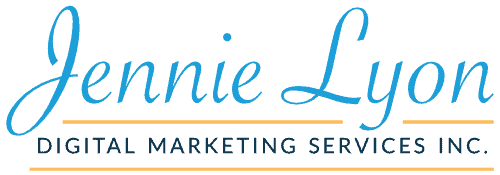The Machine Learning Strategy That Makes Facebook Ads More Profitable
Facebook is king. Don’t take my word for it; just ask someone if they have a Facebook account. The chances are that they will say “Yes!” So, let’s talk about Facebook ads!
What used to be a simple way for brands to reach their customers is now a complicated mess of algorithms and machine learning. Running Facebook ads is no longer just about whether or not you can afford it. But also if your targeting strategy ranks you high enough to be seen by the right audience. Chances are that your company will pay just as much money for fewer views than before.
Do you know how many people use Facebook every month? Over 2.6 billion users! And 1.73 billion of those users are on it daily. So I know you can see the opportunity here. With personalized ads, brands can cost-effectively reach customers. They help businesses grow, create jobs, and provide people with a better experience. Through Facebook’s auction system, where machine learning is taking over, advertisers can produce the perfect ad for the perfect person.
Before we dive into the nitty-gritty of “the machine,” if Facebook ads have already got you down, we can help. Learn more about that here.
Now, how exactly does Facebook decide which ads show in your feed?
Facebook uses two factors in its advertising algorithm: targeting and auction. Targeting involves constructing a profile of the sort of person you want to see your ads — age, gender, and interests — and then setting a budget. The second factor is the ad auction. Facebook runs an auction every time a person clicks on an ad. Which determines which advertisements they’ll see in their feeds. This determines which advertisers get the last word in any given post and for how much money.
Marketers have a wealth of marketing tools at their disposal. The Facebook auction is one such tool! Because Facebook knows what its users want, it can deliver ads relevant to the user. This means building a custom audience for an advertiser for those who have expressed interest in a product or service. Now let’s look at how the Facebook auction functions and how you can harness its power.
Facebook has a bidding system for its ads, and you control who gets the top spots. But what if I told you that there’s a secret to getting the top spot? That’s right, the top spot is reserved for the highest total value score — and advertisers with the highest total value score get their ads in front of more Facebook users. To break it down a little further, advertiser value is an estimate of how likely a person will take the advertiser’s desired action.
Confusing, right?
Ad quality is next. First, they figure out ad quality using machine learning. Then, they use this number to push the best ads to the top of the queue while pushing bad ones to the bottom. This means that 98% of users will see an ad near the top of the list, which makes sense, right. So, how does it do this? Check this out:
What is Machine-Learning, and How Does Facebook Use it?
Machine learning is a type of artificial intelligence designed to learn from experience rather than pre-programmed to follow the rules. With the help of machine learning, Facebook can quickly identify patterns in user behavior and serve them relevant ads, content, and notifications. Facebook then uses this machine learning to generate the estimated action rate and the ad quality score used in the total value equation. Letting the software handle things for you without you needing to tell it exactly what to do every time is a handy feature. It can allow your business to grow exponentially, freeing up your time and resources to be spent elsewhere.
Next, machine learning models predict how likely an individual will take the desired action for a specific business objective to estimate the action rate. To do this, the models consider people’s behavior on and off Facebook, as well as other factors. These include the content of their posts, contact information, and location.
There are two main types of behavior that the models consider. One is behavior done on Facebook, like clicking on ads or liking posts. The other is behavior taken off Facebook, like installing apps or visiting websites. The algorithm that generates a quality score for an ad pays attention to the feedback of people who see or hide it, and assessments of low-quality attributes (such as if the ad has too much text in its image) use sensationalized language endlessly baits the viewer). The advertiser’s bid, the estimated success rate, and the ad quality score go into calculating the ad’s total score for the auction.
Whew. That is a whole heck of a lot of information I know, even for a digital marketer! But wait, there’s more…
How does machine learning improve ad delivery?
When someone interacts with an advertisement, the advertiser’s system better predicts the estimated action rate and ad quality. With billions of people using apps and engaging with ads each day, Facebook’s system gets lots of information to improve its calculations, ultimately maximizing value for both parties.
The old system is out. It’s all about the new system. The algorithm ranks ads based on the price they are worth to the consumer, not by how much they are worth to the advertiser. The highest bidder does not always win! If the system predicts that the person will respond better to a cheaper ad or higher quality, it will be used instead.
Here’s the thing about ads, they are more than just one-trick ponies. These days, they have brains. So you may wonder what controls are even available in this world of advertising? Let’s take a deeper look.
Ad Preferences
On the Ad Preferences page, users can review data that influences what ads are shown to them. They can opt out of some ads completely or report these ads for removal. Users also have the ability to hide what ads they don’t want to see on any site by clicking on “hide this ad” links on pages with ads.
These opt-outs and hides are aggregated on an individual user basis so you can see which campaigns are most and least effective in each market. Based on the above, what is the most significant benefit of using an ad preferences feature in a PPC campaign? Answer: You save ad budget! Look, there’s no doubt an ad preference feature will keep some users from seeing certain ads. But, if your goal is ROI, you need to know how much money you will save and direct that money to other parts of your campaign where it will do the most good.
Why Am I Seeing This?
Why Am I Seeing This is a feature that lets people know why they see particular ads. When they tap on the ad or post in their news feed, they get more information about the advertiser’s targeting options to reach them. They can also take action to customize further what they see.
A simple but powerful feature helps people decide whether or not to give an advertiser their time and attention. An example of this would be an airline that shows up because the user tapped on the ad and saw it was from the airline industry. The user then sees options to “Learn more about flight deals from [the airline]” or “Change my future flight booking settings.”
Off-Facebook Activity
Facebook ads are also shown to you based on your browsing activity on other sites. Off-Facebook Activity is a way for users to find out what information we have about them and to clear it from their account if they want to.
In a nutshell, Facebook uses cookies to track users’ web browsing habits and show them relevant ads at their convenience. For example, if a person visits a site about camping, they might see the ad for a new tent they’ve never seen before because of their recent browsing. While you can’t control if your ads are discriminated against, it’s important to make sure that your advertising is not being blocked for any reason.
Overall, we have discovered that Facebook ads can be tricky. And have had some significant issues over the past few years and gained a bad rep. Let’s review some of the major misconceptions.
What are common misunderstandings about Facebook Ads?
- With the rollout of the Apple iOS updates, consumers became concerned about if Facebook was selling their data. The answer – NO – Facebook does not sell people’s data to advertisers or anyone else. Information is not shared with advertisers that identify individuals unless they’ve given explicit permission.
- Is Facebook listening? – We’ve all had the experience of talking to someone with our phones nearby about a trip or product, and BOOM, next thing you know, an Ad pops up on your web browser. One thing for sure is that Facebook does not use the content of people’s text messages or phones’ microphones to inform ads or change what they see in News Feed.
- Boosting a post may be tempting for a brand with little Facebook Ads experience and a tiny budget, but it might not be the best solution. Boosting a post is just as effective as a campaign. When you boost a post that is not designed to generate a particular action, it may gain you more impressions but no conversions. Obviously, the goal is conversions for the best ROI.
So what did we learn?
- How does Facebook decide which ads to show – Facebook uses two factors in its advertising algorithm: targeting and auction.
- What is Machine-Learning – Machine learning is a type of artificial intelligence that’s designed to learn from experience rather than being pre-programmed.
- How does machine learning improve ad delivery – Facebook’s system collects information to improve its calculations, ultimately maximizing value for both parties and ad delivery.
- What controls are available to consumers to control their ad delivery experience – Consumers can use the Ad Preferences and “Why am I seeing this” feature to control what ads show up in their ad feed.
Links For This Episode:
How to Write Your Facebook Ads Workbook
Rate, Review, & Subscribe on Apple Podcasts
If you like what you hear on the podcast, please consider rating and reviewing my show! Woo Hoo! Click here, scroll to the bottom, tap to rate with five stars, and select “Write a Review.” I would love to hear what episodes you enjoy the most!
If you haven’t done so already, please subscribe to the podcast. I’ll be adding new content weekly, if you’re not subscribed, there’s a good chance you’ll miss out. Subscribe now!























I am absolutely FURIOUS that I have to pop in and out of a different account to manage my Facebook page now. Before, I could post to my FB page from my personal profile … now I have to constantly “switch” back and forth. It is not only annoying but a waste of time. I am using third-party services or the Business Suite (which is equally confusing) to manage my page posts and Instagram posts. Why couldn’t they just leave well enough alone?
Hi, Kim! I hear you! If you end up needing any help, just let me know.